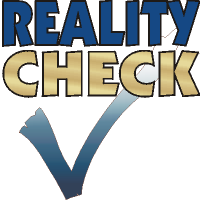One upside of living in this internet-connected world is that we have so much access to useful information.
But there’s always a downside, isn’t there? Here’s one. While it’s easy to access information, it’s also easy to produce information. Websites, facebook, forums, blogs, you name it; anyone can write it!
Is the information true? I’m sure that you know that some is, and some isn’t. Our big challenge now is how to tell the difference between the true and the untrue.
Some stories are blatantly and deliberately false. However, I think that many are reflections of differences in perception.
Here’s a little story. I’d seen an article about an entrepreneur and his medical company. I thought it would be interesting to know more about this guy, so I looked further.
The first challenge was to find the right guy among all the others with exactly the same name. But I found him. I’ll call him Mike.
Mike’s biography, news announcements and information over the years painted a pretty clear picture of a bright young entrepreneur who is an innovator in the medical field. It was interesting and uplifting to read about these positive activities.
But I also came across other information with a different take. This portrayed Mike as an unsuccessful businessman with a sketchy academic background and overstated qualifications.
So which is it? You’d pretty much have to know Mike personally to say for sure. Even then, it would depend on how you look at it.
“How you look at it” is the key point. Mike could be both an unsuccessful businessman and a smart medical innovator. One of these descriptions does not preclude the other. But they certainly create a different impression, don’t they?
When we think about perceptions of others, or even ourselves, whether we see a positive, inspiring picture or a negative disappointing picture can depend a lot on how we look.
For example, if you’ve ever written a letter of reference for someone, then like me, you probably make an effort to focus on the person’s positive attributes. While no one is without fault, we have choices in what we highlight versus what we skim over.
Are there other ways we could portray that person? Certainly!
Here’s an experiment you might find interesting, maybe even enlightening! Think of someone you know well; it can even be yourself. Write a short biography of this person from the most positive possible viewpoint. Successes, of course, are easy to write about. However, even failures can often be shown to have been stepping stones to better things, opportunities for reflection, challenges that redirected one toward a better path, and so on.
If we focus on this, we can make almost anyone sound pretty good.
Now, the second part of the experiment is to write the biography for the same person, but focus on the negative. Is it possible? I suspect so. I could easily write my own biography to be less than flattering, and I could do the same for others if I choose a negative slant.
When you try this, you may be shocked by how easy it is to take the same facts and portray quite different pictures. Whether the result is positive and flattering or negative and downright nasty is often in the hands (or the keyboard) of the person doing the portraying.
When we look at others (and even ourselves) it’s helpful to remember that while facts are facts, our perception of those facts influences our conclusions: how we perceive and treat people. We may not always be able to discern the facts, but it’s useful to remain aware that perceptions can influence everything.
How do you discern truth from fiction?

